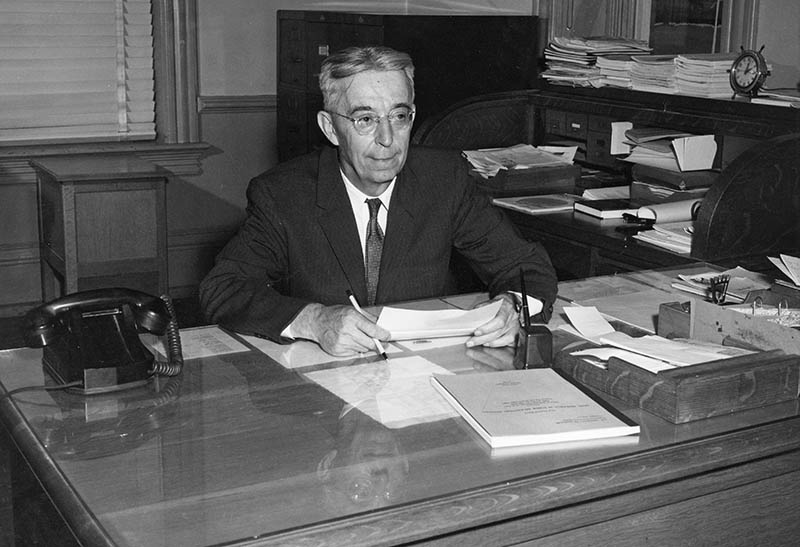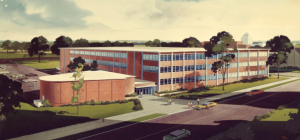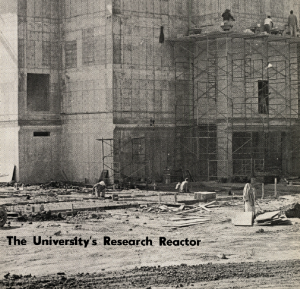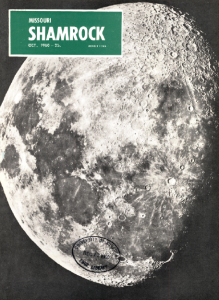July 12, 2022

Our look back at Mizzou Engineering’s history continues this month during the 1946-47 school year. When we left off, Dean Harry Curtis was juggling an unusually large student body and a shortage of faculty and supplies. Enrollment exceeded 1,200 in the fall of that year, forcing the College to hold courses in the early morning hours into the evening. In 1948, enrollment peaked at 1,500 students, many of whom were soldiers returning to college equipped with benefits from the G.I. Bill. Enrollment began to subside as the cohort of veterans graduated and with the start of the Korean War in the early 1950s.
Curtis left in 1949 when President Harry S. Truman appointed him vice chairman of the Tennessee Valley Authority. Huber O. Croft was appointed dean that year marking the beginning of a long and successful tenure.

Over the next 13 years, Croft would oversee completion of significant construction projects, including mechanical and electrical engineering laboratories and the building now known as Naka Hall. In 1951, Croft established the Missouri Honor Award for Distinguished Service in Engineering, which today remains the highest honor bestowed on alumni. Croft is also the author of the College’s second history book, which explored the decades following Mendell P. Weinbach’s book, “Engineering at the University of Missouri.”
The 1950s ushered in a new era for engineers. “Today man’s comfort and very existence has come to rest in the hands of the builder, the man of science and vision, the man of invention and curiosity, the engineer,” the 1950 Shamrock proclaims. Now a monthly bulletin, the Shamrock showcases engineering feats from across the state — such as construction of the Highway 63 bridge over the Missouri River — and nation. Much of the publication features ads from companies such as Du Pont, Westinghouse, Dow Chemical and, by 1958, IBM and NASA. The advertisements not only promoted each company’s new technologies but also aimed to recruit graduates.
The College purchased its first analog computer in 1952 and would continue to incorporate the emerging technology throughout the decade. The 1961 Shamrock included an article promising that computers wouldn’t replace human personnel. By 1963, “Introduction to Computer Programming” became a required course for students with more advanced computer electives being offered.

Other new programs also began in the 1950s. Recognizing that many Mizzou Engineering alumni ultimately assumed leadership roles that require organizational and optimization skills, industrial engineering was added in 1958. Course offerings expanded to include nuclear fuels and nuclear engineering. In 1959, Dean Croft proposed the idea of the University building a research reactor, explaining that the nuclear age would have significant impacts on medicine, agriculture and veterinary science in addition to engineering. Construction began in 1963, and today, the University of Missouri Research Reactor is the largest reactor located on a college campus today.

Airplanes and aircraft were also of interest to engineering students throughout the 1950s and by the 1960s, that interest turned to space. One article in 1964 envisioned an eight-man crew making a round trip to Mars in 500 days. According to the author, such rocket “must be boosted into orbit about the earth by chemical rockets.” While courses around aerospace engineering were being offered, aerospace became a formalized program at Mizzou Engineering in 1967.
The 1960s also ushered in a new era for the University of Missouri when it became a four-campus system, extending its educational reach to Kansas City, St. Louis and Rolla. This occurred in 1964, just in time for another technological revolution.
This is part of a year-long series about the history of Mizzou Engineering. See previous decades here.